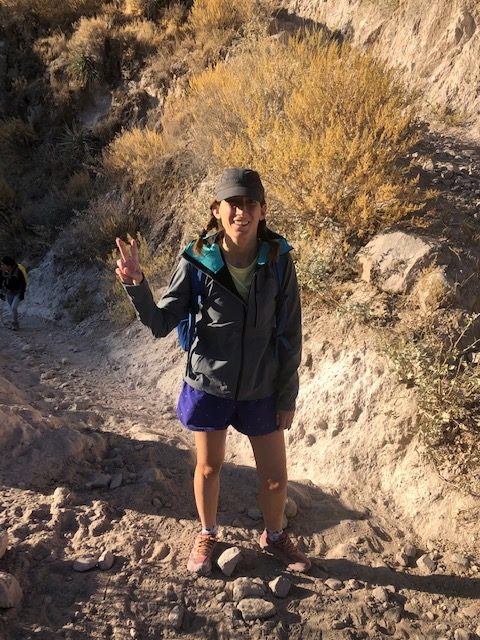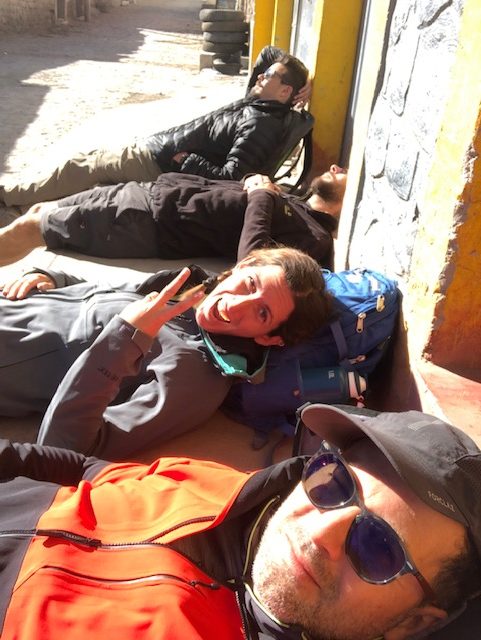The Colca Canyon was the first trek of our trip to Peru and will always remain in my memory for two fundamental reasons: the beauty of nature and fatigue for the altitude, both majestic.
Let’s start by saying that for reasons of time we left for the tour just one day after arriving in Arequipa and Peru, so we still had to get used to both the time zone and the altitude, which in the city exceeds 2000 meters above sea level.
In hindsight it would have been better to wait one more day before leaving, but it wouldn’t have been in the Badonelli style!
The alarm sounds really early, at 2:30 am to prepare for the 3:00 am departure; we leave the big backpack in the hotel in Arequipa and carry the small one (about 40 liters) with the indispensable for the two days … at the end of the post I will give you more details about the equipment.
The Colca Canyon is located about 160 km from Arequipa and with its 3270 meters of depth it is one of the deepest in the world – there are those who say the first, who the second. In the valley where the canyon is located, there are some remote villages whose inhabitants essentially live on agriculture and you can admire the typical animals of Peru: vicuñas and alpacas.
From Arequipa it takes about 4 hours to reach the valley and start the tour to discover the most interesting places in the area. The tour in the Colca Canyon, in addition to trekking to descend into the oasis in the valley, in fact provides some stops to admire the major attractions:
- Chivay: a small village where you can admire the ladies in traditional clothes, vicuñas and alpacas.
- Mirador de los Volcanes: from here you can clearly see the line of the 8 volcanoes that touch over 5,000 meters high: Misti, Chachani, Pichupichu, Hualcahualca, Sabancaya, Chucura, and the Chila Cordillera.
- Mirador Cruz del Condor: in the village of Cabanaconde at 4910 mt s.l.m. this viewpoint is found where to witness the flight of numerous condors. Extraordinary birds with a wingspan of up to 3 meters.
From the main square of Cabanaconde, the actual trek of about 17 km begins to descend to the oasis in which to stay overnight (which at some point in the day will become a mirage).
The 7 hours of walking required include, 3 and a half hours of downhill zigzag walking up the mountain, a few uphill stretches of which one is rather tiring, the crossing of 3 villages where you can stop to meet the locals, a path of about 20 flat minutes and a last steep descent to reach the oasis where you stay overnight.

Don’t underestimate the effort required: the walk, although mostly downhill, is in itself hard, rocky, dusty and narrow, you walk on the edge of the path suspended hundreds of meters from the canyon valley, the donkeys, which go fast, have the previously. I saw people have knee problems and I was really tired at the end of the day.
The accommodations that are located at the bottom of the Canyon are usually very basic, but the landscape around, the atmosphere of peace that one breathes, the silence, and the pool in which to cool off, will repay you in the great effort. After dinner, included in the price, the bedtime arrives early: a bit because of the great tiredness of everyone, a little because the current is disconnected … and then because the following day the alarm goes off at 3:30 am.
On the second day the menu provides “only” 6km uphill, but consider that you will face a drop of about 1200 meters! For those who do not feel like facing the road, there is a mule climb to be booked the night before at around 60 soles (€ 16) … many are ashamed to choose this option.
Given the time of departure for most of the time you walk in the dark with the help of torches and after about 3 hours you reach the top. After the first two hours of walking, I had a little failure: you want fatigue, altitude or the fact that you face this stretch on an empty stomach (breakfast is scheduled at the top) in the last hour I continued only thanks to stubbornness ( that sometimes comes in handy).
Short and frequent breaks along the way to catch your breath, slow down the beats and admire the view when the sun starts to rise help and repay the effort you are facing.
When you reach the top, a last effort to walk a few kilometers on the flat and reach the village where you can have breakfast and rest a little in the sun, then you depart by bus crossing the natural park and stopping for a brief stop at some thermal springs where to give some well-deserved rest for tired legs.
What to pack for trekking
You will face two challenging days, therefore bring only the indispensable with you so as not to burden the backpack unnecessarily.
- a change of clothes
- Long pants and a sweatshirt (for evening and early morning)
- Light jacket for wind and rain
- Technical shoes (I used Mountain Racer trail running shoes because they are lighter than hiking shoes but suitable for the route)
- Torch
- Water(at least 2 lt each)
- Swimsuit
- Towel
- Cap
- Sunscreen
- Energy bars (to be consumed during the journey especially on the second day)
Trekking to the Colca Canyon was the most challenging of the entire trip (perhaps also because the first and as I said we had to get used to the altitude) but it is certainly an experience not to be missed.



